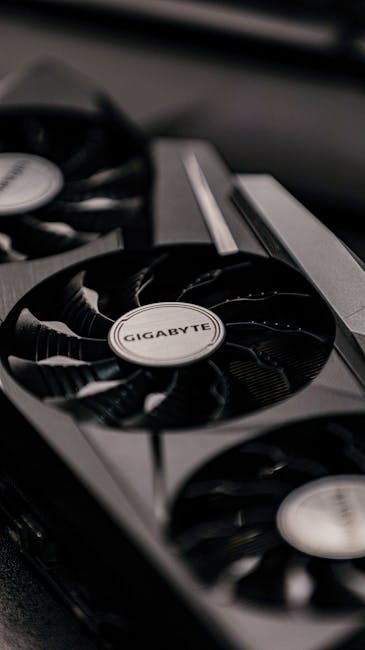AI Inference Optimization: Compiler Tuning for GPUs
As AI workloads balloon and access to raw GPU capacity tightens, software is emerging as the decisive lever for performance and cost. Hardware remains crucial, but it’s the compiler, runtime, and developer tooling that often determine whether a model can be deployed efficiently at scale. This post explains why compiler-focused, software-first strategies matter for AI inference, what techniques drive gains, and how teams can prioritize optimizations to unlock more GPU compute without buying more hardware.
What is AI inference optimization and why does compiler tuning matter?
AI inference optimization covers the set of software techniques and engineering practices used to make model execution faster, more memory-efficient, and cheaper per query. At the heart of this effort is the compiler and runtime layer that translates model definitions and high-level kernels into GPU instructions.
Compilers do more than convert code: they decide memory layouts, fuse operations to reduce kernel launches, choose precision modes, and schedule work across hardware units. When done well, compiler-level improvements can produce large performance and cost wins across a broad set of models — without changing model architecture.
How do compilers and runtimes squeeze more GPU compute?
Optimization work targets the gap between model intent and hardware behavior. Below are the most impactful areas teams and optimization providers prioritize:
- Kernel fusion and operation scheduling — Reducing kernel launch overhead by combining adjacent ops improves throughput, especially at small batch sizes.
- Memory layout and tiling — Optimizing how tensors are laid out in memory reduces cache misses and enables larger effective batch sizes.
- Precision and mixed-precision tuning — Using FP16, BF16, or quantized integer formats where acceptable lowers memory and compute cost significantly.
- Batching strategies — Dynamic batching and request coalescing increase utilization for latency-tolerant workloads.
- Autotuning and kernel selection — Choosing the best kernel implementation for a given device and model shape yields measurable speedups.
- Graph-level optimizations — Removing redundant operations, constant folding, and operator fusion at the graph level reduces work and memory movement.
- Sparsity and structured pruning — When supported, exploiting sparsity can reduce compute substantially, but it often requires specialized kernels and hardware support.
- Efficient CUDA / GPU backend integration — Tuning the interface between a model runtime and the GPU driver stack improves end-to-end latency.
Why compilers beat naive deployments
Many teams start by shipping models using default runtimes. Those defaults are safe but rarely optimal. A tuned compiler stack can collapse many small inefficiencies into a consistent performance uplift across models, reducing the need for custom per-model engineering.
Can software-only optimization outcompete hardware upgrades?
Short answer: sometimes. Hand-tuning a model for a particular hardware target — spending months adjusting kernel code and architecture — can surpass general-purpose compiler results. But that level of investment is expensive and not scalable across many models or clients. Optimized compilers offer broad applicability and fast time-to-value.
For organizations evaluating tradeoffs, consider these points:
- Time to deploy: Compiler improvements roll out across models quickly; hand-tuning is slow.
- Cost vs. peak performance: Hand-tuned implementations may win on peak throughput, but compilers often win on aggregate cost-effectiveness.
- Maintainability: Compiler-based optimizations reduce long-term maintenance compared to bespoke model forks.
What concrete techniques deliver the biggest ROI?
Not all optimizations are equal. Prioritize interventions based on observed bottlenecks:
- Profile first — Measure latency, memory, and kernel launch patterns to focus effort where it matters.
- Enable mixed precision — Test FP16/BF16 and quantization; many models tolerate lower precision with minimal accuracy loss.
- Fuse and eliminate ops — Reduce overhead from small, frequent kernels.
- Tune batching policies — Match batching to latency targets and traffic patterns.
- Leverage autotuning — Automated benchmarking to discover best kernels per device and shape.
Practical profiling checklist
Teams should gather these metrics before and after changes:
- 99th percentile latency
- Throughput (QPS)
- GPU utilization and memory footprint
- Cost per 1,000 inferences
- Error/accuracy drift after precision changes
How are startups and providers positioning around inference optimization?
A growing cohort of companies focuses on the software layer rather than just selling raw GPU capacity. These providers combine compiler engineering, runtime optimizations, and deployment tooling to extract more value from existing hardware. That approach is complementary to specialized hardware improvements such as power-efficient chiplets or infrastructure capacity planning.
For deeper context on hardware-software tradeoffs and energy implications across AI datacenters, see our coverage of Power-Efficient Chiplets: Cutting AI Chip Power by 50% and Data Center Energy Demand: How AI Centers Reshape Power Use. For technical approaches that optimize inference caches and memory bottlenecks, explore Revolutionizing AI Inference Efficiency with Tensormesh’s KV Cache System.
How should engineering teams evaluate optimization partners?
When choosing between in-house tuning, third-party optimization providers, or upgrading hardware, teams should ask prospective partners these questions:
- Which compiler and runtime layers do you control and optimize?
- How do you measure cross-model improvement versus per-model tuning?
- What safety checks exist for mixed precision or quantization-driven accuracy loss?
- How are deployments integrated into CI/CD and model monitoring?
- What uplift can you demonstrate on workloads similar to ours?
Competitive dynamics: labs vs independent optimizers
Major AI labs and hyperscalers will always have an advantage when optimizing for a single, high-value model family. Their tight vertical integration yields strong wins for those specific cases. Independent optimization firms must therefore compete on breadth, speed, and adaptability: offering improvements across many models and workloads without bespoke per-model reengineering.
How can teams start optimizing today?
Here’s a practical roadmap to begin extracting more from your existing GPU fleet:
- Instrument: Add lightweight profiling to capture latency, memory, and kernel data in production.
- Baseline: Record cost-per-inference and performance under typical traffic patterns.
- Small experiments: Try mixed precision and basic fusion on non-critical models.
- Automate tuning: Introduce autotuning and kernel selection into your CI for model shape variants.
- Measure impact: Compare pre/post metrics and roll out changes incrementally.
Key metrics for ongoing optimization
Track these continually:
- Latency (P50, P95, P99)
- Throughput (QPS)
- GPU utilization and memory headroom
- Cost per inference and monthly spend
- Model accuracy after precision changes
What are the risks and tradeoffs?
Optimization is not purely upside. Mistakes can increase inference error, introduce instability, or complicate observability. Key tradeoffs include:
- Accuracy vs. performance: Lower precision can hurt model fidelity unless validated carefully.
- Portability vs. peak speed: Highly tuned kernels may perform poorly across different GPU generations.
- Complexity: Advanced compiler tooling can raise the bar for debugging and monitoring.
Final thoughts: why software-first optimization matters for the future of AI
Hardware will continue to advance, but the marginal value of additional silicon is increasingly squeezed by deployment constraints and costs. Compiler and runtime innovation unlocks performance across generations of GPUs, reduces carbon and dollar costs, and accelerates time-to-market for model features. For many teams, a software-first approach to AI inference optimization offers the best mix of impact and scalability.
Related reads
For readers interested in adjacent infrastructure and sustainability issues, our reporting on Data Center Energy Demand and chip-level efficiency work in Power-Efficient Chiplets provide useful context.
Ready to lower inference cost and speed up deployment?
If you want to turn compiler-level improvements into measurable savings, start with profiling your production workloads, experiment with mixed precision in a staging environment, and consider partnering with optimization teams that specialize in compiler and runtime engineering. Subscribe for more deep dives, or reach out to our editorial team to suggest case studies and implementation guides we should cover next.
Call to action: Subscribe to Artificial Intel News for weekly analysis on AI infrastructure, or contact us to request a practical optimization checklist for your team.





